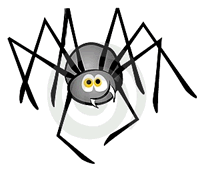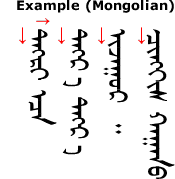Here’s a recording in a mystery language.
Can you identify the language, and do you know where it’s spoken?
Here’s a recording in a mystery language.
Can you identify the language, and do you know where it’s spoken?
The other day I came across the wonderful German word Pfeife, which means whistle or pipe, and comes from the Middle High German pfife, from Old High German pfiffa, from the Vulgar Latin pipa (pipe; tube-shaped musical instrument), from the Classical Latin pipare (to chirp; to peep), which is of imitative origin, and is also the root of the English word pipe, and related words in other European languages.
I particularly notice this word because the initial pf in Pfeife just appeals to me for some reason. It’s one of the consonant shifts (p > pf) that happened in High German, though not in other varieties of German.
Words and expressions related to Pfeife include:
– pfeifen = to blow a whistle; to sough; to whistle; to hoot; to pipe
– Ich pfeife eben darauf = I couldn’t care less about it.
– nach jds. Pfeife tanzen = to dance to sb.’s tune
– jdn. nach seiner Pfeife tanzen lassen = to lead sb. by the nose
– Pfeifkonzert = catcalls
– Er pfeift aus dem letzten Loch = He’s on his last legs (“He pipes from the last hole”)
– Da pfeift es aus einem anderen Loch = That’s a horse of a different color (“He/she pipes from a different hole”)
Sources: bab.la Dictionary, myEtymology.com, Online Etymology Dictionary
A challenge has been issued on the Omniglot fan club on Facebook to make a polyglot video of you speak all the languages you know well to see who can speak the most languages. Some have already taken up the challenge, others are seeing it as a bit of fun.
What do you think of the multilingual videos that can be found on YouTube? Have you made any polyglot videos?
Many of the ones I’ve seen are of people talking about how they have learnt various languages in those languages. There’s nothing wrong with that, but I would like to see something different – something funny, informative and/or useful – such as interesting factoids about different countries and languages, interesting words and expressions, stories, jokes, tongue twisters and so on.
I have only made monolingual and bilingual videos so far. Since Xtranormal disappeared last year I haven’t made any more videos, but I’ve finally thought of a way to make them – using hand puppets – I prefer not to appear in them myself for various reasons. All I need to do now is find a way to edit videos. Can you recommend any good and easy-to-use video editing software?
Here’s a recording in a mystery language.
Can you identify the language, and do you know where it’s spoken?
According to an article I came across today, humans possibly have innate preferences for the sound patterns found in languages which might help babes to distinguish language from non-language and to acquire language.
An experiment undertaken by the National Academy of Sciences found that even new born babies show a preference for combinations of phonemes common in human languages over rare or non-linguistic combinations of phonemes. For example, it is relatively common for words to begin with bl, not very rare for them to start with lb. This suggests that the range of sound combinations found in languages, which though large, is limited by our brains innate preferences.
I found another report on this story on Science Daily which provides more details.

In The Hobbit, Bilbo uses the words attercop, lazy lob, crazy cob, and old tomnodd as insults he’s attacked by giant spiders in Mirkwood. I guessed that they are alternative names for spiders, but I thought I’d check.
Attercop is a word for spider from the Old English átorcoppe, from átor/attor (poison) and coppe, from cop (top, summit, round head), or copp (cup, vessel). It is apparently still used in North Yorkshire, though is considered old fashioned. It can also mean a peevish or ill-natured person. Possibly related words include the Norwegian edderkopp(er) (spider) and the Danish edderkop(per).
Lob is another extinct word for spider from the Old English lobbe/loppe, of unknown origin.
Cob is another extinct word for spider that features in cobweb, and is probably cognate with the Flemish cobbe/coppe (spider) and Westphalian cobbe (spider).
I can’t find any information about tomnodd. Do you know where it might come from?
Other Old English words for spider include gangewifre (‘a weaver as he goes’) spíðra, wæfergange, gongelwæfre and spigt.
Source: OED, Word Wide Words, Wiktionary, Old English Tranlsator
Last week I went to Denbigh, a small town in the north east of Wales, to sing in a concert. On the way there there was some discussion about the origins and meaning of the name Denbigh. So I thought I’d find out more. The English name of the town doesn’t mean anything, but the Welsh name, Dinbych, means ‘small fortress’ – din is an old word for fort or castle related to the word dinas (fort; refuge; city), and bych is a variant form of bach (small). Related words include dinasfraint (citzenship), dinasol (civic, municipal), and dinaswr (citizen).
Din comes from the same root as the Irish dún (fort), the Scottish Gaelic dùn (fortress, heap), the Manx doon (fort, fastness, stronghold, bastion, earth fort, dun, fortified rock), and din (fortress) in Breton and Cornish – the Proto-Celtic *dūnom (stronghold) [source], which is cognate with the Proto-Germanic *tunaz/*tunan (fortified place), the root of the Old English tuun/tūn (an enclosure; farmstead; village; estate), from which we get the word town; and of the Dutch tuin (garden), and the German Zaun (fence, hedge).
The element -dunum in Gaulish/Latin places names, such as Lugdunum (Lyon) and Acitodunum (Ahun), comes from the same root, as does the element -ton in English places names such as Workington, Ulverston, Dalton and Warton.
The root of all these words is the PIE *dhu-no- (enclosed, fortified place, hill-fort), from *dheue- (to close, finish, come full circle) [source].
Here’s a Glossary of Welsh Place-Name Elements, and a Key to English places names.
Here’s a recording in a mystery language.
Can you identify the language, and do you know where it’s spoken?
| français | English | Cymraeg |
|---|---|---|
| la (jeu de) boules | bowls | bowliau; bowls |
| jouer aux boules | to play (lawn) bowls | chwarae bowls/powls |
| le terrain de boules | bowling green | lawnt fowlio; grîn fowlio |
| le bowling | bowling | bowlio |
| le piste de bowling | bowling alley | ala/ale/ali fowlio |
| le boule | bowl | bowl; powl |
| la quille | skittle | sgitlen (sgitls) |
| la route de contournement | bypass (road) | ffordd osgoi |
| le pontage | bypass (operation) | dargyfeiriad |
| le domaine; la propriéte | estate | tir; meddiant; tirogaeth |
| le lotissement | housing estate | ystad o dai |
| la ferme | farm; farmhouse | ty fferm; ffarm; ffermdy |
| la fermette | small farmhouse | ty fferm bach |

Last week a visitor to Omniglot asked me whether there is a single word in English that means writing direction, i.e. the direction in which writing systems are written. The Latin alphabet, for example, is written from left to right in horizontal lines, as are many other writing systems, while writing systems like Arabic and Hebrew are written from right to left in horizontal lines, and a few writing systems, such as traditional Mongolian and Manchu, are written from top to bottom in vertical columns running from left to right – other directions are available.
On Wikipedia I found the word directionality, and I found that there are more precise words for this concept in German and Dutch: Schreibrichtung / Schriftrichtung and Schrijfrichting. On the W3C site I found the term script direction.
The lack of a single-word term in English is partly because in English noun phrases are usually written as separate words, unlike in German and Dutch, where they are often written as single words.
I came up with some alternative possible terms for this phenomenon: scribeway / scribe way, scribepath / scribe path, script direction, script path, script way, script course, script orientation, or using Greek rather than Latin/Germanic roots: graphodromos, or grammadromos (dromos = road in Greek), or mixing Latin and Greek roots: scriptodromos / grammadromos.
What is writing direction called in other languages? Are there any others which use a single word.